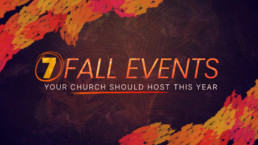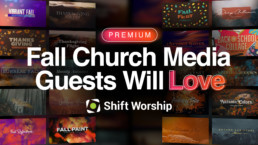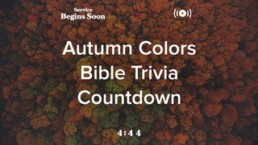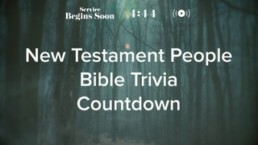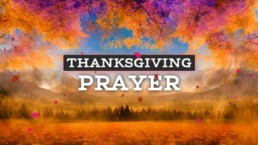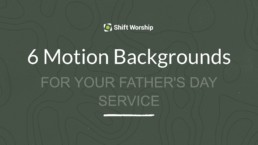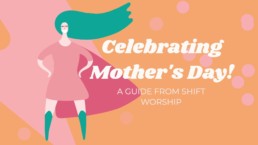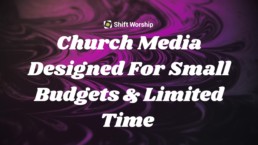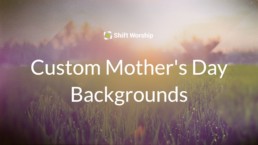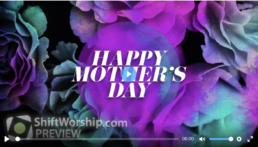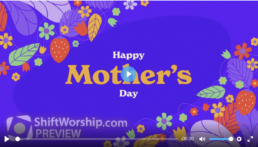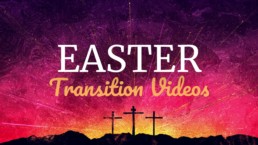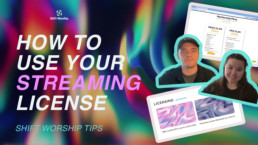7 Fall Events Your Church Should Host This Year
Fall events like festivals, Trunk or Treats, and pumpkin painting parties can draw people into a season of connection, build relationships, and create a welcoming atmosphere that extends beyond the church walls. Whether it’s a family movie night or an apple-picking outing, each event is an opportunity to foster fellowship, serve the community, and show Christ’s love in action. Successful fall events require planning, enthusiasm, and a bit of creativity to make each gathering memorable and impactful. With the right volunteers, budget, activities, and communication, your church can create an experience that resonates with attendees and encourages them to return.
1. Fall Festival
Starting strong with a big fall event your church can host is a Fall Festival. If you have never been to a Fall Festival, you can compare them to a small and charming carnival. Fall Festivals take a lot of work to put on, but can be a great way to to encourage new people to connect with your congregation and foster a sense of community! Some things to consider when hosting a Fall Festival are volunteers, budget, location, activities, and getting the word out.
Volunteers: The right volunteers will make or break this event! You want to ensure that you have people helping who are excited about this event and know how to be flexible with plans. Volunteers are the ones who will be extremely hands-on from start to finish, so make sure you can apply their strengths where they are most useful. For example, volunteers who are great with kids should be placed in kid-focused activities to create a warm and welcoming atmosphere. Young adult volunteers would be great at assisting the elderly. High school students could help with parking instructions. You get the point! Ensure you plan and communicate with everyone beforehand so they know what to expect. Also, make sure to have a rotating schedule so that everyone can experience and enjoy the festival!
Activities: There are so many fun and unique activities to have at your Fall Festival, that it can be hard to choose! Some ideas we came up with are bobbing for apples, face painting, a petting zoo, hay rides, pumpkin bowling, scavenger hunts, candle making, etc.
Budget: Before taking planning action, sit down with your church board and brainstorm everything that will cost the church money. Think about the general location and materials that will be useful when hosting a Fall Festival. Fundraising is always a great way to earn money to throw this event together!
Location: Depending on your geographical location, you can incorporate some unique activities like a hay ride, pumpkin bowling, candle making, a corn maze, etc. Look up local spots in your area that would be willing to have your Fall Festival!
Spreading the word: This might be the biggest step in your planning process! You want your congregation to show up and have a great time, but also find ways to invite the local community to join as well. Sermon titles, printables, and social media posts are a great way to invite guests internally. To extend the invite outside of your congregation, you can pass out printed invitations to the local community, advertise in local newspapers and businesses, and encourage your congregation to invite people.
2. Trunk or Treat
Calling all candy lovers of any age! Trunk or treat is a great way to involve all members of your congregation as well as the outside community. You can invite everyone from your church to bring their car, decorate it, and pass out candy to everyone in attendance. Attendees can also dress up. This creates an opportunity for new guests to interact with church congregants, volunteers, and staff. It’s a warm and friendly way to invite people to the next Sunday service.
This low-cost event only requires a parking lot (the church’s), candy, decor, and some sort of invitations (digital and/or printable).
3. Apple Picking & Cider Making
Depending on where you are located, this might be a fun outing for congregants to participate in! You can organize for everyone to meet at a local orchard to pick some yummy apples. It’s common that orchards have plenty of activities for everyone of all ages, as well as great places for group photos. Churches should also encourage people to invite guests outside of the usual congregation! After picking apples, you can continue the fun by making cider from the apples picked and share with your congregation after the next service.
4. Cake or Dessert Walk
This event is a simple yet fun way to raise money for the church and connect with the community! To get started, organize a location, date, and time, where plenty of people can come with baked goods to sell and shop for. Next, you’ll want to create a digital or physical invite (or both) – with details all about the baked goods walk. Make sure to share this invite in several services, and encourage guests to invite their friends and family as well.
To run the event, you can sell tickets that allow guests to take a certain amount of baked goods, or pay per piece at each table. To spruce up the event, you can hand out free hot chocolate while attendees shop the goods!
5. Pumpkin Painting Contest
We would suggest pumpkin carving..but we know that can get pretty messy. A fun way to keep pumpkins involved is by painting them! This way, the pumpkins will last all season long. After picking the date, time, and location (and letting everyone know), you can set up multiple tables filled with different paint colors, brushes, and of course – the pumpkins. It’s up to your church to decide the little details such as charging for the event (to fundraise), picking the pumpkin size, and contest rules and categories.
Pro tip: Have your children’s minister lead the event to help establish a connection with new and old faces!
6. Family Movie Night + Bonfire
It’s time to bring out the coziest blankets and smores! A family movie night is a unique way to have your community gather and do something together. Depending on the weather and resources, your movie night can be hosted indoors or outdoors. If it is indoors, you can use the normal screens that you use during service. If the movie night is outside, we recommend using a projector and some type of screen. You can add more to the event by having a bonfire where everyone can make smores and get warm.
To host this event, take an evaluation of the supplies and space that you have access to. We suggest involving your AV team with the technical side of things. You want to make sure you have enough power to run all the necessary equipment.
Checklist items:
- Invites for the event (digital or printed)
- Fire Pit + Wood
- Projector + Screen or Wall to Watch
- Computer or DVD player (so you can watch the movie!)
- Snacks or things for smores (skewers, chocolate, marshmallows, graham crackers)
Movie options:
- A Charlie Brown Thanksgiving
- Frozen
- Tangled
- Beauty + The Beast
- Scooby Doo
- Under Wraps
- Ghostbusters
- The Goonies
- The Ghost And Mr Chicken
- E.T.
7. Operation Christmas Child Packing Party
Operation Christmas Child (or OCC) is a project of Samaritan’s Purse, that delivers gift-filled shoeboxes to children in need around the world, sharing joy, hope, and the message of God’s love. You can make a powerful impact by hosting a “Packing Party,” where guests come together to fill shoeboxes with toys, school supplies, and hygiene items. It’s a wonderful opportunity to serve together and reach out to the community. To invite people, consider sending a personal invitation, announcing it during church services, and sharing it through social media. Make the event accessible and welcoming, highlighting the fun and meaningful impact of each shoebox packed!
Wrap – Up
Hosting fall church events offers a fun and engaging way to build community, connect with new faces, and bring joy to families in your congregation and beyond! From a lively Fall Festival, complete with volunteer-led activities like face painting, hayrides, and pumpkin bowling, to a cozy Family Movie Night with a bonfire and s’mores, there’s something for everyone. Events like Trunk or Treat, a Pumpkin Painting Contest, or an apple-picking outing invite local involvement and provide simple ways for guests to engage with each other. A fundraising Cake Walk or an Operation Christmas Child Packing Party creates purpose, allowing your community to give back while having fun. By planning, involving volunteers, budgeting, and spreading the word creatively, you can make these fall events memorable, impactful, and community-centered.
Premium Fall Church Media Guests Will Love
A successful and meaningful worship experience typically takes a lot of preparation and planning, not to mention incorporating popular fall media. Waiting until the last minute to craft a sermon and find media to compliment is extremely uncommon for media teams and pastors. While there may be the occasional adjustment made the night before, many worship experiences that people witness have been in the works for a long time! It’s always beneficial to plan for different topics, seasons, and holidays. That’s why the Shift Worship team has compiled our most popular, high-quality media that you can use for your Fall service.
Why Use Fall-Themed Church Media?
At the end of Spring and the beginning of Fall, students are going back to school, routines are back in place, and everyone is looking forward to (hopefully) cooler weather. With students going back to school, it’s a great time to encourage people to come back to church, and invite new guests too!
With new and familiar faces venturing to church, it’s a good idea to showcase stunning visuals that show guests that you (as a collective church), are looking for ways to stay modern while sharing important messages. Fall-themed media can help create relevance with the current season, create excitement for church events, and create a warm and welcoming atmosphere.
Popular Fall Collections
Three of our most popular fall-themed collections are Autumn Canopies, Last Light, and Autumn Path. Generally, each collection on Shift Worship consists of still and motion backgrounds, countdown videos, social media graphics, sermon titles, and the occasional mini movie. All of these amazing features are available with our Media Membership, plus users can customize still and motion backgrounds with our exclusive editing program. The Pro Membership includes everything in the Media Membership, PLUS transparent text layers, and PSD files.
Collections are a one-stop shop for church media! From the moment guests are greeted, to the closing prayer, churches can find aesthetically pleasing visuals that help guests feel engaged and retain important information. All the media found in each collection works seamlessly with popular presentation software, letting you focus on delivering impactful messages.
Autumn Canopies
This collection is perfect for bringing the warmth and beauty of Fall to your Sunday services! Media in this collection features sunlight streaming through golden leaves – setting a cozy atmosphere. Over 35+ different still and motion backgrounds are included in this collection along with 3 unique countdown videos, a plethora of social media resources, and a stunning sermon title.
Last Light
The Last Light collection creates a more reflective and calm service atmosphere. While having a fall focus, these visuals take guests on a virtual stroll through the woods! The still and motion backgrounds are a great tool to display important information, upcoming events, scripture, lyrics, and sermon notes.
Autumn Path
This collection features warm fall colors and leaves on a peaceful forest floor. Create a serene atmosphere during service with visuals that stand out and help support your service message. While it’s not our norm, this collection is AI-generated and supported. No need to worry, it has been reviewed by our amazing designers, and used by many churches!
Top Downloaded Fall Countdowns
It’s no secret that putting together a Sunday service requires a decent level of hospitality. Like any good host, you greet guests when they first arrive, point out the restrooms, and help them find a comfortable place to sit. But now what? You might be too busy to entertain guests before service begins, and it might feel awkward to let them sit there. Take the pressure off hosting expectations by sharing a countdown! Countdowns exist to indicate to everyone the amount of time they have before the service begins. The countdowns found at Shift Worship are set against dynamic visuals with background music, making it the perfect resource to bring attention to the worship experience and keep everyone on schedule.
Recently, Shift Worship has introduced Trivia countdowns that boost pre-service engagement and learning. Encourage guests to answer the questions, and receive the answers instantly!
Autumn Colors Trivia Countdown
This countdown features aerial footage of a stunning fall forest, setting the perfect tone for your church service. Engage guests with Bible trivia questions, complete with multiple-choice answers and a follow-up reveal. The Autumn Colors Trivia Countdown helps focus hearts and minds on Scripture.
Moody Autumn Trivia Countdown
Featured in this countdown is a moody forest backdrop with background music. As the countdown timer continues, guests can answer questions about key figures from the New Testament. Each question is multiple-choice, with the correct answer revealed directly after.
Surreal Fall Countdown
This five-minute countdown is set against a snow-capped mountain and fall forest background. Perfect for connecting with the fall season. The background music is energizing with a steady beat – great for creating anticipation for the worship experience to follow!
Favored Fall-Themed Mini Movies
Mini movies add something special to your Sunday services. They are short visuals that are great to use as a worship intro, sermon bumper, call to action, or closing video. Some include voiceovers, words on screen, spoken text, live-action, cartoons, peaceful visuals – you name it! Head to Shift Worship now to find one that fits your needs.
Two Lists
This mini movie is great for guiding your congregation into a time of reflection. Focusing on the book of Numbers, this mini movie walks viewers through the thought process that the ancient Israelites had after they were freed from slavery. The Israelites were more focused on what they did not have, versus the provisions that God had blessed them with. Instead of judging the Israelites, this movie calls for guests to reflect and shed light on blessings from God they are taking for granted.
Give Thanks
Create a sense of gratitude during service by sharing the Give Thanks mini movie! A dynamic background of aerial footage over a fall forest, paired with reflective music, is perfect for emphasizing the importance of giving thanks to God. Psalms 118 encourages guests to focus on God’s goodness and to be grateful for all the blessings in their lives.
Thanksgiving Prayer
This mini movie features light, but energizing background music and a powerful prayer displayed on screen. The text on screen lists all the blessings and gifts from God, encouraging themes of thankfulness and gratitude. This visual is perfect for emphasizing the importance of acknowledging God’s presence and the blessings He provides. Great to use during your Thanksgiving services or any time you want to focus on gratitude!
6 Father's Day Motion Backgrounds for Your Sunday Service
6 Motion Backgrounds for Father’s Day Service
Shift Worship has a vast amount of motion backgrounds that are perfect for adding that something special to your worship experiences. The best part? We have media that you can use for every occasion. Below we have shared the most popular Father’s Day Motion Backgrounds.
Take your church on a serene walk through the (virtual) woods! With earthy tones and forest scenes, it’s perfect for honoring the fathers and father figures in your congregation who embody strength and hard work. These motion backgrounds will add a heartfelt and rustic touch to your Father’s Day celebrations.
Want more media just like this? Find the full collection HERE.
Brighten up your Father’s Day service with this vibrant and modern Father’s Day background. With dynamic movement and bold, colorful geometric designs – this motion is perfect for bringing a fresh and energetic vibe to your celebration. Add a contemporary flair to your service that is sure to resonate with your congregation.
Want more media just like this? Find the full collection HERE.
Add a touch of sophistication to your Father’s Day celebration with this stylish motion background. The sleek, plaid-inspired design in rich blues and oranges are perfect for honoring the dads in your congregation, and bring a polished yet warm feel to your service.
Want more media just like this? Find the full collection HERE.
Express heartfelt gratitude this Father’s Day with a vibrant and dynamic “Thanks Dad” motion background. The energetic design elements make it perfect for a lively and memorable Father’s Day service, ensuring every dad feels appreciated. This motion is a great way to add a modern and heartfelt touch to your celebrations.
Want more media just like this? Find the full collection HERE.
Bring a fun and nostalgic vibe to your Father’s Day service with a BBQ focus motion background. Featuring a playful barbecue theme with cheerful illustrations, it is perfect for celebrating the dads who love to grill. This motion adds a lighthearted and joyful touch to your special service. Use this background to capture the essence of family, fun, and fatherhood in a delightful and engaging way.
Want more media just like this? Find the full collection HERE.
Timeless charm is what this motion background is all about! With a subtle and sophisticated tie motif you can honoring the dads who bring wisdom and grace to your congregation, while providing a polished and heartfelt touch to your service.
Want more media just like this? Find the full collection HERE.
Highlighting Fathers & Father Figures Is Important!
In many communities, fathers and father figures are esteemed as pillars of guidance, strength, and love, reflecting the characteristics of God. They are often seen as providers who not only tend to the physical needs of their families but also nurture spiritual growth. Their role extends beyond the home into the community, where they often serve as moral role models and sources of wisdom.
Honoring these amazing men during your Father’s Day service is a great way to show appreciation for all the roles they play in your community. It is a celebration of their dedication, love, and leadership that they provide. The acknowledgment during the service highlights their importance in the growth of faith and values within the home and church. Through prayers, blessings, and messages of gratitude, you can encourage them to continue their commitment to these principles and to foster the spiritual growth of everyone.
How To Use Motion Backgrounds
Motion backgrounds are a great way to engage your guests and add something special to your service all year round! A few different ways to use them are:
- Announcements
- Show off the amazing things happening in your community with dynamic movement on your screens!
- Highlight Fathers In The Community
- Share pictures or testimonies from the fathers in your community.
- Scriptures
- Want guests to remain engaged with the Word of God? This is a great way to make learning scriptures interesting.
- Sermon Notes
- Help guests retain important points of the message by using a motion backdrop.
- Call to Action
- Need congregants to do something? Grab their attention with dynamin background. Perfect to use for communion, offering, asking for volunteers, highlight small groups, announcing bible studies, and so much more!
Celebrating Mother's Day: A Guide From Shift Worship
At Shift Worship, we want to make sure that you have the perfect guide to celebrating Mother’s Day during your worship service. We have had the privilege of seeing the powerful impact that a well-crafted worship service can have on a congregation. With Mother’s Day approaching, it’s an opportune time to reflect on the vital role that mothers and mother figures play in our lives. Continue reading this guide to learn how churches and worship leaders can create a Mother’s Day service that not only celebrates these incredible women but also fosters an atmosphere of community and spiritual growth.
Importance of Celebrating the Works of Mothers
Mothers often serve as the unsung heroes in both families and communities. Many common scriptures speak of a women who leads with strength and dignity, cares for her family, and is respected by her community. Mother’s Day provides a unique opportunity to highlight these extraordinary efforts. By acknowledging the spiritual, emotional, and physical tasks of mothers and mother figures, churches can create a worship experience and service that resonates deeply with the experiences and sacrifices of motherhood, enriching the spiritual journey of the entire congregation.
How to Celebrate Mothers and Mother Figures During Services
Celebration Media & Worship Songs
Utilizing media effectively can transform a regular service into a memorable experience. Consider using videos that feature personal stories from mothers within your community, children showing appreciation, or biblical scriptures based on the love of mothers. These can be paired with worship songs that reflect themes of gratitude, love, and resilience. Better yet, show lyrics to the worship songs on backgrounds that match the theme of Mother’s Day like bright colors, floral, or nature scenes. Shift Worship had both motion and still backgrounds that are perfect for using.
Scriptures & Videos That Celebrate Mother’s Day
Scriptural readings that highlight the virtues and challenges of motherhood can also be very impactful during worship services. Integrate these scriptures with themed video content from the Shift Worship library, where we offer a range of Mother’s Day-specific backgrounds and mini-movies designed to complement and enhance the worship experience.
Extra Things to Provide During a Celebratory Mother’s Day Service
To make Mother’s Day services even more special, churches can incorporate several thoughtful gestures that honor and celebrate all the mothers and mother figures who attend! Churches can create a welcoming atmosphere right from the entrance. Distributing fresh flowers—perhaps a single rose or a small bouquet—as a symbol of appreciation, greeting each mother with a smile and a warm wish for a Happy Mother’s Day. This simple act can set a positive tone for the rest of the service.
Offering Snacks Before & After Celebration
Next, churches should think about the comfort and enjoyment of your guests. Offering complimentary snacks and coffee can make the morning feel relaxed and hospitable. Consider including options like mini pastries, fruit, or snacks to cater to a range of food preferences, ensuring everyone feels considered and cared for.
Fun Celebration Activities For All
Adding a photo booth decorated with a beautiful, themed backdrops and some fun, Mother’s Day-themed props can create lasting memories for your guests and their families. This creates a space for families to celebrate together and capture the moment in a tangible way. Churches can also arrange for someone to take photos, ensuring high-quality images that can be shared digitally with the attendees after the event.
Customized bookmarks are another thoughtful gift. These can feature inspirational quotes or scriptures that resonate with the themes of love, gratitude, and strength that embody motherhood. Such personalized items can serve as meaningful keepsakes that mothers can use in their daily lives and remember the special day by (great for Bibles).
Another way to make this day memorable is to organize a small segment during the service where children can hand-make cards or crafts to give to their mothers. This not only involves the younger members of the congregation in the celebration but also gives them an opportunity to express their love and appreciation creatively.
Fit The Needs Of Everyone
If able, setting up a relaxation corner where mothers can enjoy a few minutes of quiet reflection or prayer can be a wonderful addition. Equip this space with comfortable seating, soft music, and some inspirational reading material to provide a peaceful retreat. This is also a great area for new mothers to still listen to the sermon while caring for their young children.
To conclude the service, churches can consider a special blessing for all mothers, acknowledging their hard work, dedication, and the invaluable roles they play in their families and communities. This could be a communal moment of gratitude, where the entire congregation can show their appreciation and give thanks for the mothers among them.
By going beyond the usual service elements and adding these special touches, your church can provide a truly memorable and enjoyable Mother’s Day experience that leaves a lasting impression on all who attend!
Different Ways to Invite Guests to a Mother’s Day Celebration
Inviting guests to Mother’s Day services offers a wonderful opportunity to employ both creativity and heartfelt messaging. A blend of digital and traditional methods can maximize your reach and impact. Start with digital platforms: use your church’s social media accounts, website, and email newsletters to spread the word. These tools are not only cost-effective but also allow for immediate and interactive engagement. You can create event pages, share posts that highlight what to expect during the service, and even feature testimonials or messages from previous years’ celebrations. (Pro Tip: There are stunning Mother’s Day graphics on Shift Worship that your church can use, OR create your own).
For a more personal touch, consider sending out physical invitations. Personalized postcards or beautifully designed cards can be mailed to your congregation’s homes. These tangible reminders often hold a special place in recipients’ hearts and homes, serving as a warm, personal invite to a meaningful event.
Additionally, you can enhance the invitation process by incorporating a call to action where recipients can RSVP or register online. This not only helps in planning for the event with regards to numbers but also builds anticipation and commitment. Finally, encourage your congregation to extend these invitations to their family and friends, turning the event into a community-wide celebration that honors mothers and mother figures from all walks of life.
Celebrate This Service on Social Media
Social media is a powerful tool for spreading the word and engaging the community. Share behind-the-scenes preparations, snippets of rehearsals, or testimonials from congregation members about what Mother’s Day means to them. Use hashtags like to increase visibility and encourage sharing. Live-streaming the service can also allow those who are unable to attend in person to participate and feel connected.
Shift Worship Free Trial
To assist churches in preparing for Mother’s Day, Shift Worship is offering a free trial that includes full access to our extensive media library. The trial lasts for 30 days, allowing church leaders ample time to explore and download various worship media contents, including HD and 4K videos. With no access limits during the trial, users can customize their worship experiences with everything from countdowns and mini-movies to motion backgrounds and stills, all aimed at making this Mother’s Day unforgettable!
This Mother’s Day, let’s make a collective effort to celebrate and honor the mothers and mother figures in our lives with a service that is as meaningful as it is memorable. By leveraging thoughtful media content, engaging the community, and adding special touches to your service, your church can provide an enriching experience that beautifully reflects the spirit of the day.
Church Media Designed For Small Budgets & Limited Time
Find High Quality Media That Matches Your Needs
First Baptist Church in Minden, Louisiana, traditionally known for its choir and hymns, is embracing modern technology to engage its younger congregation, particularly through its student ministry, the Third Floor. Kevin Stevenson, the Media Communications Director, has spearheaded the adoption of vibrant, dynamic visual graphics to captivate the tech-savvy attendees. Previously reliant on simple white text on black backgrounds and time-consuming searches for free online content, the church has seen a transformation through its partnership with Shift Worship. This collaboration provided them with a variety of high-quality worship backgrounds, mini-movies, and graphics.
Shift Worship’s resources have made it significantly easier for the church to maintain the attention of its young audience with visually stimulating content, crucial for the fast-paced, low-preparation environment of their Sunday services. “When I came across Shift Worship, I started to see something a little bit more original and creative, and that’s why I like it more. They are different.” – Kevin Stevenson. The change has not only enhanced the atmosphere, making it more enjoyable and engaging but also improved the communication between the student minister and the congregation. Stevenson appreciates the originality and diversity of Shift Worship’s offerings, noting the fresh, creative content that differs markedly from other platforms. This transition has effectively enhanced the worship experience, turning it from “plain vanilla” to a lively, appealing engagement for all attendees.
Shift Worship Free Trial
Shift Worship offers a 30-day free trial with two subscription options: Media and Pro. Both plans allow users full access to the site where you can browse and download a rich collection of worship media, including still and motion backgrounds, countdowns, mini-movies, sermon titles, and social media graphics. You can also take advantage of the in-browser Quick Editor to tailor content to your needs. The Pro plan includes additional access to Photoshop and After Effects files, providing further customization for users with more advanced editing needs. This trial period offers a comprehensive opportunity to explore and utilize Shift Worship’s extensive resources, enhancing worship experiences with high-quality, creative media!
Custom Mother's Day Backgrounds with Shift Worship
Using motion graphics in your Mother’s Day service is great for celebrating the amazing mothers (and mother figures) in the community, highlighting strong pillars in the church, and setting examples for how children of all ages should acknowledge the role that their mothers play in their lives.
Highlighting Mothers & Mother Figures With Motion Backgrounds
Everyone plays an important role in the church community, but none quite like mothers and mother figures. Mothers give life, teach, and help shape people into who they are. They have natural talents for nurturing, educating, and displaying countless acts of selflessness. Sometimes the role of motherhood goes beyond the biological title. There are adoptive mothers, grandmothers, aunts, or mentors who can all be influential in this role.
Throughout history, mothers have played crucial parts in the growth of key figures and societies. As we reflect on the profound impact of mothers and mother figures, it’s essential to recognize and appreciate their contributions, not only on special occasions but every day. Their unwavering support, endless patience, and infinite love are gifts that shape us in innumerable ways. Highlighting these selfless individuals are crucial for encouraging and showing support. Churches can set examples of how to show the wonderful works of people and how the goodness of their hearts reflect many message about the love of Christ.
In the Christian faith, women are seen as embodiments of God’s love and care. They reflect the nurturing aspect of God’s character, offering us a glimpse of His unconditional love for us. In celebrating and appreciating these remarkable women, we also celebrate the divine love that guides and sustains us through life’s journey.
Using Mother’s Day Motion Backgrounds
The way that churches worship is ever-evolving. Throughout history, traditions slowly change with new and improved elements being incorporated. One element that is “new” compared to the history of Christian worship experiences is the use of motion graphics.
Motion graphics and backgrounds can provide several purposes for the worship experience. They reflect the main points of the sermon message, set the tone for service, and visually represent scriptural truth. During the time of worship, motion backgrounds can be a great tool for keeping attention on the lyrics displayed. It can also help create a place of reflection where guests can focus on their relationship with God. Using motion graphics during worship services offers new dimensions to express praise and faith.
Displaying motions during service can be pretty simple! At Shift Worship, all of our media works with the common presentation software. Simply head to the site, choose the background you want, download the desired format, and then upload to the presentation software you are using. We do recommend testing and running through the entire service presentation before presenting media during your worship service – just to make sure that everything works properly.
Customizing Mother’s Day Motion Backgrounds
At Shift Worship, there are TONS of motion graphics ready for you to download and use during your next service. Better yet, there are plenty of Mother’s Day motion graphics already available. This is a great resource if you are looking to find media to plan for your services in advance.
We understand that you may want a particular background with your own message to share. Easy enough, users can create their own motion backgrounds with the Quick Editor. Simply find a collection that fits your message, open the Quick Editor (found on the page), and then select the exact graphic that you want to customize. In the Quick Editor, users can upload images, change fonts, and add in extra elements!
You also have the flexibility to pick and choose motion backgrounds from several different collections. We put these collections together to help create a very cohesive look, but the final display decisions are up to you!
Free Mother’s Day Worship Motions Backgrounds
We have great news! We are offering FREE Mother’s Day media when you sign up for a 30-Day Free Trial. During this trial, you can choose between our two amazing plans, Media and Pro. Both trials grant access to everything that exists with an actual membership and users can have access to our entire library and can download (and keep) media! You can explore our still and motion backgrounds, countdowns, social media graphics, lower thirds, Photoshop and After Effect files.
Easter Transition Videos
In this post, we are covering the importance of Easter transition videos, the benefits of them, and some of the most popular videos on Shift Worship. Below, we highlight two of our most popular Easter videos, but we have many more on our site that you can find here!
Purpose of Transition Videos
Sometimes creating a worship service from start to finish can be a lot of work, and somewhat daunting. Depending on the size of the team putting this together, it may even seem impossible. Transition videos can serve many roles in a worship service such as worship intros, sermon bumpers, filler, and highlighting main points.
We recommend using transition videos as…well…transition videos! They are perfect for melding different aspects of the service together by eliminating awkward pauses and possible tech malfunctions. Congregants can remain engaged throughout the entire journey with amazing visuals.
All of our mini movies work with the common presentation software like Media Shout, Pro Presenter, and Easy Worship! They also have several different format options, so you can download exactly what works for you!
Transition videos are also a great way to lead into the beginnings of sermons or at the end!
Pro Tip: While our videos cannot be edited or altered, there are a few options for displaying them during service. Some videos can play in the background during the worship or sermon sections! You also have the flexibility to mute the sound of the video and have a live voice-over or instrumental accompaniment.
With either a Media or Pro subscription, users are able to livestream content from our site with no problems! If you are looking for more information on how this works, visit our site here, or send us an email at: info@shiftworship.com.
Importance of Sharing The Easter Story
Sharing the story of Easter during your church services had great importance as it serves to educate believers with a fundamental belief of their faith: the triumph of hope over despair and the promise of redemption.
By retelling the story of Jesus’s Crucifixion, death, and Resurrection, guests are reminded of the ultimate sacrifice paid for their sins. Sharing this story during Easter services can inspire reflection, repentance, and renewal. Additionally, sharing the Easter story can help the church community connect and create hope for the future. Most importantly, these visual can help encourage congregants to live in faith and practice the messages of love, forgiveness, and compassion.
Jesus Paid It All
As one of our top Easter videos, this media pays homage to the sacrifice that Jesus made for humankind. With beautifully painted imagery this Good Friday mini movie is perfect as an intro, transition, illustration, or sermon bumper this Easter season.
Created by Centerline New Media, this video will captivate the hearts and minds of your guests and encourage them in their journey with Christ.
View this video here.
Christ Is Risen
Found in the Vivid Easter Service Pack by Centerline New Media, this video shares the story of the ultimate sacrifice that Jesus made for humanity. With stunning visuals and inspirational music, you can help guests feel connected to the story of the Crucifixion.
View this video here.
Video Recap
In the video above, Nathan shares his excitement for both videos! Nathan is part of the Shift Worship team and is a crucial factor in making sure that churches have the media they need to reach their audience every Sunday.
Get Both Videos With A Free Trial
That’s right, get both videos for FREE with our 30-Day Free Trial. With a trial, you have 30 days or up to 50 downloads to explore our site and access our media. Whatever you download is yours to keep-no strings attached! Users have the ability to choose between our Media and Pro plan. Our Media trial includes access to motion and still backgrounds, social graphics, sermon titles, mini movies, countdowns, and the Quick Editor. The Pro trial includes everything in the Media trial PLUS transparent text layers, After Effects and Photoshop files. Which trial will you choose?
How to Use Your Streaming License
Summary of Privacy Policy
This privacy policy pertains to Salem Church Products, a business unit of Salem Media Group, Inc. The policy explains the collection and usage of information when accessing their website, app, or other services. It covers personally identifiable information (PII) and non-personally identifiable information (non-PII). Users may need to agree to additional terms based on specific activities. The policy addresses modifications, emphasizing users’ agreement by using services. It also outlines the types of information collected, use of cookies/web beacons, preference-based advertising, and tracking technologies.
The document details the use and sharing of both personally identifiable and non-personally identifiable information. It mentions third-party vendors and sponsors, providing an opt-out option for promotional information. The policy discusses tracking technologies, email communications, and the potential transfer of assets. It highlights privacy rights, including specific provisions for children and California residents. The importance of information security measures is emphasized, along with the acknowledgment that complete security cannot be guaranteed. The document concludes by addressing third-party data/services and providing contact and opt-out information. It asserts that the posted policy is the sole statement of their privacy policy.
The Point of a Licensing Agreement
A licensing policy is essentially a set of rules and conditions that dictate how intellectual property, such as software, content, or creations, can be used, distributed, and protected. Imagine it as a legal framework outlining the do’s and don’ts for anyone granted permission to use a particular product or creation. This policy is crucial for maintaining control over the intellectual property, ensuring that creators retain their rights while allowing others to use it under specific terms.
In another sense, think of it as the terms and conditions you agree to when using software or accessing certain content. It spells out what you can and cannot do, how long you can use it, any geographic restrictions, and if there are any fees involved. The goal is to prevent conflicts, unauthorized use, and to make sure that everyone involved knows what to expect.
Beyond the legal aspects, a well-crafted licensing policy also encourages innovation and collaboration. It provides a structured way to share intellectual property, fostering an environment where creators are protected, and those using the creations can do so responsibly. Essentially, it’s a balance between protecting the rights of the creator and allowing others to benefit from their work, creating a fair and collaborative space.
Shift Worship Tips Summary
In this Shift Worship Tips session Mariah and Nathan, a special guest, discuss the often perceived dull topic of licensing in the context of worship services. Nathan acknowledges the common perception of license agreements as boring, lengthy, and filled with small print. However, the aim is to simplify the understanding of licensing for worship planning without delving into intricate legal details.
Shift Worship can be used in corporate worship gatherings, allowing users to create slides for services, including lyrics for songs. The flexibility extends to showing mini-movies and countdowns during the service. Notably, the usage is not confined to Sunday worship gatherings but can be extended for other purposes as well.
The central question addressed is related to broadcasting or sharing content online. The good news is that Shift Worship allows users to include their content on any video-sharing site after recording. No specific code or license number is required. Users are encouraged to add a text description indicating the use of Shift Worship due to copyright restrictions. However, posting content individually on video-sharing sites is not permitted; it must be part of a live-streamed worship service. Nevertheless, posting on a church’s website with a native player is acceptable.
The hosts acknowledge the potential confusion around these guidelines and offer assistance via email for any clarifications or questions. They emphasize that Shift Worship’s social media content can be posted independently without other worship or service media, provided it is mentioned that the media is sourced from Shift Worship.
Additionally, the hosts highlight that social media content can be posted independently, and during the free trial, the license agreement is included. However, after the trial period, sharing the media is restricted. The conversation concludes with gratitude for Nathan’s insights and an invitation for further questions or clarifications. Overall, the session aims to demystify licensing agreements and make them accessible for worship planning within the Shift Worship platform.
Content Found on Shift Worship
On our site, we love providing a diverse and comprehensive range of content to enhance your worship services and church events. Our offerings cater to various aspects of worship planning, ensuring a seamless and engaging experience for your congregation. Here’s a glimpse into the types of content you’ll discover on our platform:
1. Mini Movies: Our collection of mini movies is designed to convey powerful messages, tell compelling stories, and inspire reflection. These cinematic creations add a dynamic visual element to your services, creating a memorable impact on your audience.
2. Countdowns: Elevate the anticipation and engagement of your congregation with our countdowns. Perfect for creating a sense of anticipation before services or events, these countdowns come in various themes and styles to suit your preferences.
3. Backgrounds (Still and Motions): Immerse your worship space in visually stunning backgrounds. Choose from a variety of still and motion backgrounds to create the desired ambiance, whether serene, vibrant, or contemplative.
4. Social Graphics: Enhance your online presence with eye-catching social graphics. Crafted for various platforms, these graphics enable you to share announcements, quotes, and event details in a visually appealing manner, fostering connection and engagement within your community.
5. Sermon Titles: Make a statement with our impactful sermon titles. These visually appealing designs not only capture attention but also complement the overarching theme of your sermon, adding a professional touch to your presentations.
6. After Effects Files: For those seeking customization and creative flexibility, our After Effects files offer a robust solution. Editable and adaptable, these files allow you to tailor the content to align seamlessly with your specific requirements.
7. Photoshop Files: Our Photoshop files provide an additional layer of customization, allowing you to personalize and modify the content according to your unique vision. Ideal for those who prefer working with Photoshop, these files offer creative freedom.
In addition to the diverse content types, we understand the importance of flexibility in formats. Therefore, our content is available in various formats, ensuring compatibility with different software and systems. Whether you prefer MP4, MOV, PSD, or other formats, we strive to accommodate your needs, making the integration of our content into your worship planning process as smooth as possible. Explore the richness of our content library and elevate your worship experience with our versatile offerings.

